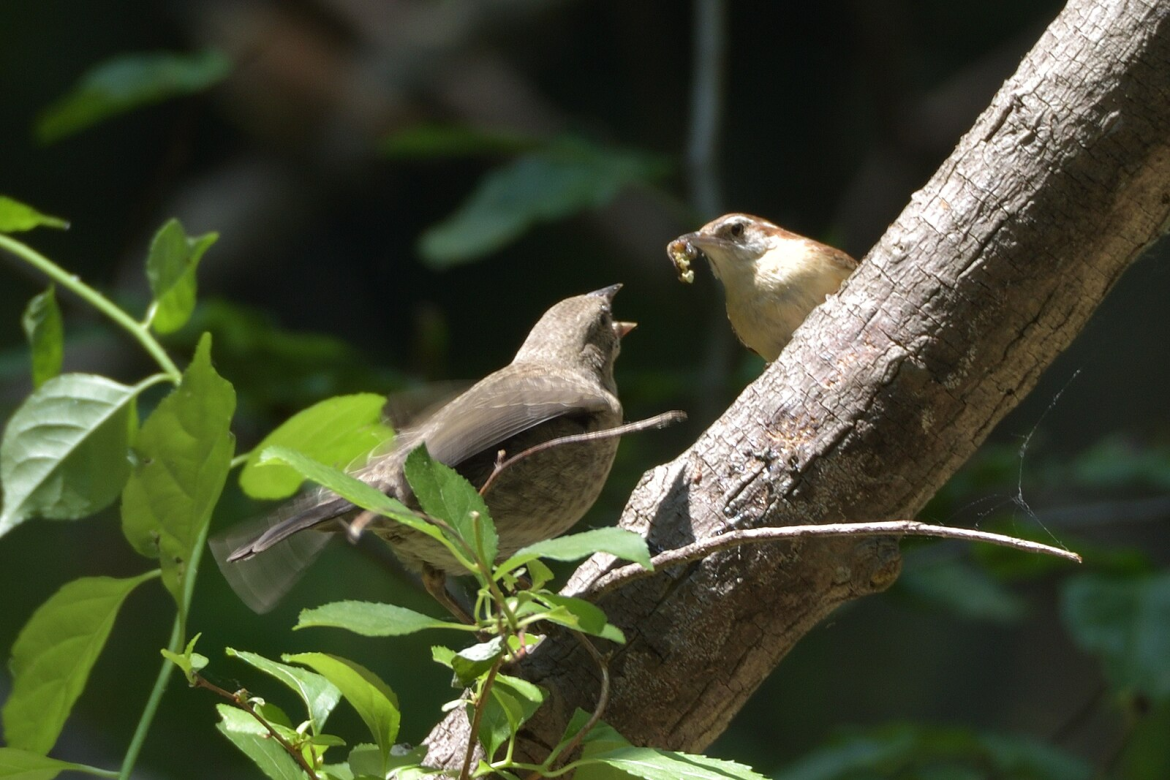
Megan Hobratschk
One of the most interesting topics discussed in my Ornithology class was about the “con artists” found in nature… Brood parasitism occurs when a female bird (the parasite) lays her eggs in the nest of another female bird (the host), who then raises both her and the parasite’s eggs. This interesting behavior is displayed by species that you may regularly see!
The Brown-headed Cowbird, which is commonly found in this area, is one of the most infamous brood parasites in the U.S. Cowbirds are not picky when it comes to what nests they decide to lay their eggs in, as they have been seen laying eggs in the nests of over 240 other species! This egg “swap” occurs when the host species is away from its nest and usually results in the Brown-headed Cowbird female removing or destroying the other female’s egg(s) in the process. This ensures her own offspring have the best chance of survival.
The host species unknowingly raises the Cowbirds’ eggs as its own. Cowbird eggs are typically quicker to hatch than the host’s eggs, which ensures the Cowbirds receive most of the attention and nutrients from their host parents. Additionally, after hatching, the parasite chick may remove their “siblings” from the nest. These unique behaviors increase the parasite’s chance of survival while reducing the survival probability of the host’s offspring. If you are interested in seeing this behavior in nature, there are many videos online of just-hatched, featherless parasite chicks flailing around the nest trying to eject the other eggs!
There are mechanisms to ensure a host species does not recognize that its nest has been altered. One such method is known as an evolutionary arms race. As the eggs and chicks of the parasite species become more like those of the host species, the host evolves to have new identifying markers. Over time, the parasite once again evolves to be more similar to the host species, and the cycle continues… These changes can occur to the pattern and coloration of the egg, or to the chick, such as mouth markings.
Another local favorite that displays brood parasitism is the Wood Duck. Unlike the Brown-headed Cowbird, Wood Ducks construct their own nests and do not solely rely on parasitism for reproduction. This species does not lay eggs in the nests of other species, but female Wood Ducks will lay their eggs in the nests of other Wood Ducks. Some believe this parasitism is due to a lack of suitable nesting sites for the Wood Ducks, as they are cavity nesters and require their cavities to have specific characteristics.
You might wonder why an individual would want to lay their eggs in the nest of another bird. There are quite a few benefits to the parasite for laying eggs in other nests. Namely, the parasite does not have to expend energy incubating and caring for its eggs. Instead of investing directly in their offspring, they invest their energy in laying as many eggs as possible (in other nests) to ensure their genes are passed to the next generation.
This is just one of the remarkable reproductive behaviors seen in nature, and I encourage you to explore this topic further if you think it’s interesting!
Photo Caption: A Carolina Wren feeding a juvenile Brown-headed Cowbird
Photo Credit: John Stockla, CC BY-SA 4.0 <https://creativecommons.org/licenses/by-sa/4.0/>, via Wikimedia Commons

